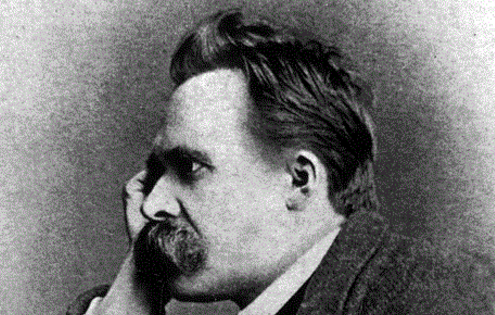Procrastination is a skill, an art, a slight-of-hand technique. I’m procrastinating right now, but you’d never know it. How many tabs do I have open in my multiple browser windows? Pick a number, any number. How many tasks have I put off today? How many dreams have I deferred? I’ll never tell. The unskilled procrastinators stick out, they’re easy to spot. They talk a lot about what they’re not doing. They run around in circles of bewilderment like the troubled hero of Dr. Seuss’s Hunches in Bunches. The skilled practitioner makes it look easy.
But no matter how much Facebook time you get in before lunch and still manage to ace those performance reviews, you’re really only cheating yourself, am I right? You wanted to finish that novel/symphony/improv class/physics theorem. But something stopped you. Something in your brain perhaps. That’s where these things usually happen. When Stuart Langfield asked a neuroscientist about the neuroscience of procrastination, he got the following answer: “People think that you can turn on an MRI and see where something’s happening in the brain, but the truth is that’s not so. This stuff is vastly more complicated, so we have theories.”
There are theories aplenty that tell us, says Langfield, “what’s probably happening” in the brain. Langfield explains his own: the primitive, pleasure-seeking, pain-avoiding limbic system acts too quickly for our more deliberative, rational prefrontal cortex to catch up, rendering us stupefied by distractions. Piers Steel, Distinguished Research Chair at the University of Calgary and a procrastination expert, shares this view. You can see him explain it in the short video below. The evolutionary “design flaw,” says Langfield, might make the situation seem hopeless, were it not for “neuroplasticity,” a fancy buzzword that means we have the ability to change our brains.
Langfield’s purpose in his short video is not only to understand the biology of procrastination, but to overcome it. He asks psychologist Tim Pychyl, whose answers we see and hear as an incomprehensible jumble of ideas. But then Pychyl reduces the complicated theories to a simple solution. You guessed it, mindfulness meditation—to “downregulate the limbic system.” Really, that’s it? Just meditate? It is a proven way to reduce anxiety and improve concentration.
But Pychyl and his research team at Carleton University have a few more very practical suggestions, based on experimental data gathered by Steel and others. The Wall Street Journal offers this condensed list of tips:
Break a long-term project down into specific sub-goals. State the exact start time and how long (not just “tomorrow”) you plan to work on the task.
Just get started. It isn’t necessary to write a long list of tasks, or each intermediate step.
Remind yourself that finishing the task now helps you in the future. Putting off the task won’t make it more enjoyable.
Implement “microcosts,” or mini-delays, that require you to make a small effort to procrastinate, such as having to log on to a separate computer account for games.
Reward yourself not only for completing the entire project but also the sub-goals.
A Stockholm University study tested these strategies, assigning a group of 150 self-reported “high procrastinators” several of the self-help instructions over 10 weeks, and employing a reward system and varying levels of guidance. “The results,” WSJ reports, “showed that after intervention with both guided and unguided self-help, people improved their procrastination, though the guided therapy seemed to show greater benefit.”
Other times, adding self-help tasks to get us to the tasks we’re putting off doesn’t work so well. We can all take comfort in the fact that procrastination has a long history, dating back to ancient Egypt, Rome, and 18th century England. The wisdom of the ages could not defeat it, or as Samuel Johnson wrote, “even they who most steadily withstand it find it, if not the most violent, the most pertinacious of their passions, always renewing its attacks, and, though often vanquished, never destroyed.”
But there are people who procrastinate, beset by its pertinacity, and then there are chronic procrastinators. “If you’re an occasional procrastinator, says Pychyl, “quit thinking about your feelings and get to the next task.” Suck it up, in other words, and walk it off—maybe after a short course of self-help. For all the conflicting neuroscientific theory, “there is a quiet science behind procrastination,” writes Big Think, and “according to recent studies, procrastination is a learned habit.” Most research agrees it’s one we can unlearn through meditation and/or patient retraining of ourselves.
However if you’re of the chronic subset, say Pychyl, “you might need therapy to better understand your emotions and how you’re coping with them through avoidance.” Psychologist Joseph Ferrari at DePaul University agrees. Citing a figure of “20 percent of U.S. men and women” who “make procrastination their way of life,” he adds, “it is the person who does that habitually, always with plausible ‘excuses’ that has issues to address.” Only you can determine whether your trouble relates to bad habits or deeper psychological issues.
Whatever the causes, what might motivate us to meditate or seek therapy are the effects. Chronic procrastination is “not a time management issue,” says Ferrari, “it is a maladaptive lifestyle.” Habitual procrastinators, the WSJ writes, “have higher rates of depression and anxiety and poorer well-being.” We may think, writes Eric Jaffe at the Association for Psychological Science’s journal, of procrastination as “an innocuous habit at worst, and maybe even a helpful one at best,” a strategy Stanford philosophy professor John Perry argued for in The Art of Procrastination. Instead, Jaffe says, in a sobering summary of Pychyl’s research, “procrastination is really a self-inflicted wound that gradually chips away at the most valuable resource in the world: time.”
Related Content:
Free Online Psychology & Neuroscience Courses
Daily Meditation Boosts & Revitalizes the Brain and Reduces Stress, Harvard Study Finds
Miranda July Teaches You How to Avoid Procrastination
The Art of Structured Procrastination
Josh Jones is a writer and musician based in Durham, NC. Follow him at @jdmagness





